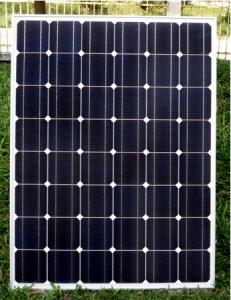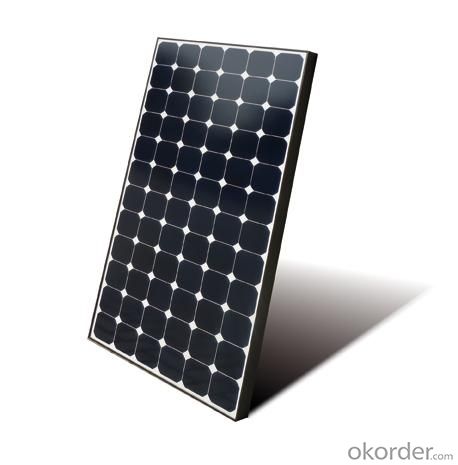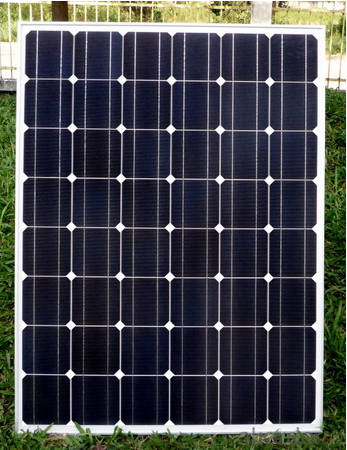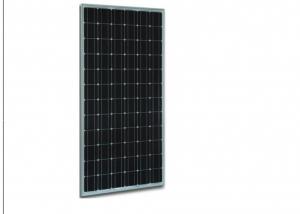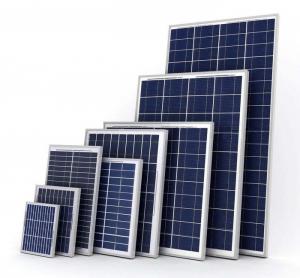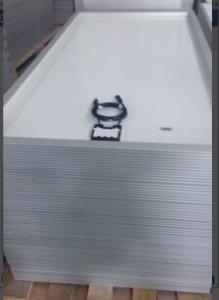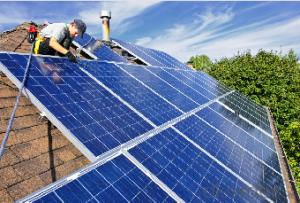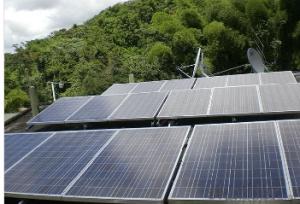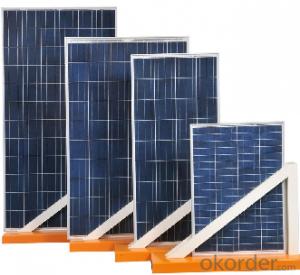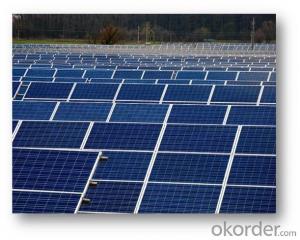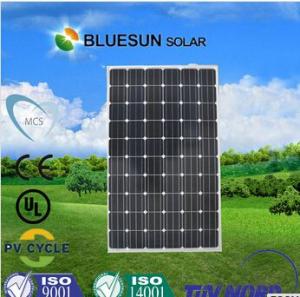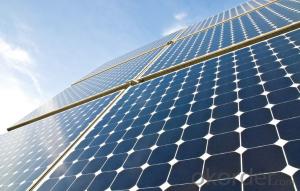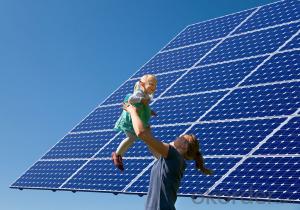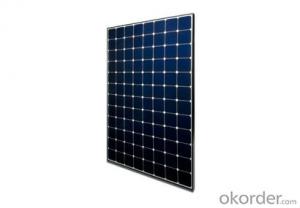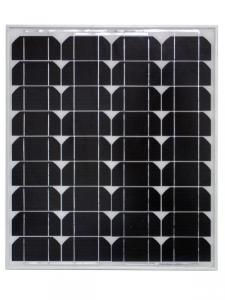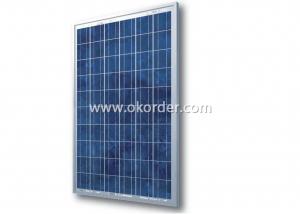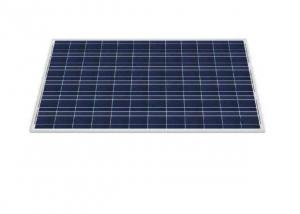Solar Panels 101:Monocrystalline Solar Module 245w with Outstanding Quality and Price
- Loading Port:
- Shanghai
- Payment Terms:
- TT OR LC
- Min Order Qty:
- 100 watt
- Supply Capability:
- 10000 watt/month
OKorder Service Pledge
OKorder Financial Service
You Might Also Like
Specification
Monocrystalline Solar Module 245W with Outstanding Quality and Price
Production Description
solar cell (or a "photovoltaic" cell) is a device that converts photons from the sun (solar light) into electricity.
In general, a solar cell that includes both solar and nonsolar sources of light (such as photons from incandescent bulbs) is termed a photovoltaic cell.
Fundamentally, the device needs to fulfill only two functions: photogeneration of charge carriers (electrons and holes) in a light-absorbing material, and separation of the charge carriers to a conductive contact that will transmit the electricity.
This conversion is called the photovoltaic effect, and the field of research related to solar cells is known as photovoltaics.
Solar cells have many applications.
ultiple solar cells in an integrated group, all oriented in one plane, constitute a solar photovoltaic panel or solar photovoltaic module. Photovoltaic modules often have a sheet of glass on the sun-facing side, allowing light to pass while protecting the semiconductor wafers. Solar cells are usually connected in series in modules, creating an additivevoltage. Connecting cells in parallel yields a higher current; 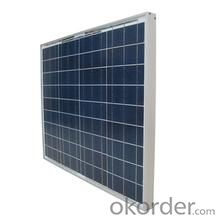
Application
remote area home system
earth orbiting satellites
consumer system
water pumping system
residential
commercial
industrial
rooftop
Product Feature
Higer convension than the poly solar module
12 years product warranty
A grade solar panel with good surface looking
EVA tempered glass TPT
MC4 connecter
Package
24pcs into one carton 312pcs into a 20 foot container.
- Q: I'm writing a post-apocalyptic story in it the main character finds a warehouse. Eventually he finds out the roof is covered with commercial solar panels. Given it's been over a year since the majority of the world died no manainence was done, do they still work?
- In my experience working with solar panels, I've found that the panels themselves are robust and can last years. How that energy is transferred from the panel to perform work (sorry for the boffinism) is where the complexity emerges, namely due to the fact solar panels produce DC current, and nearly all of our electrical appliances use AC current. In most cases, solar panels will either send energy through a DC/AC inverter directly to be used for appliances, or stored in deep cycle batteries, then converted to AC using an inverter when the user wants to use his/her appliance. Now to answer your question: the solar panels will be fine, and could conceivably be in fine working order with AC current available IF... and I cannot stress this enough (namely through years of field experience dealing with solar powered scientific instrumentation that was working well and then mysteriously not working)... IF rats and other rodents haven't eaten through the wires. This is probably the most likely reason that a set of solar panels wouldn't be working in your given scenario. Hope this helps, and good luck!!
- Q: Can solar panels be used to heat water?
- Yes, solar panels can be used to heat water. Solar thermal systems, also known as solar water heaters, use sunlight to heat water and are more efficient at heating water compared to using solar panels for electricity generation. These systems capture the sun's energy and transfer it to a fluid, which then heats the water for various applications such as domestic use, swimming pools, and commercial purposes.
- Q: Can solar panels be installed on parking lots or garages?
- Yes, solar panels can be installed on parking lots or garages. In fact, these areas are often ideal for solar panel installations due to the large open spaces and unobstructed sunlight exposure. Installing solar panels on parking lots or garages can help generate clean and renewable energy, reduce electricity costs, and provide shade for parked vehicles.
- Q: Can solar panels power an electric car?
- Yes, solar panels can power an electric car. Solar panels convert sunlight into electricity, which can then be used to charge the batteries of an electric car. This allows the car to run on clean, renewable energy and reduces reliance on fossil fuels.
- Q: what do solar panels do?
- Solar panels (arrays of photvoltaic cells) make use of renewable energy from the sun, and are a clean and environmentally sound means of collecting solar energy. Here at solar panel information, we've amassed a wealth of information relating to solar panels and the field of photovoltaic technology. You can learn how solar panels work, how they are manufactured, where to buy them, and how to set them up. If you are looking for information on solar panels and don't know where to start, check out our solar panels section to learn more about how these photovoltaic cells are derived from silicon and what solar energy means to you.
- Q: Can solar panels be installed on a church or religious building?
- Yes, solar panels can be installed on a church or religious building. In fact, many religious institutions are increasingly adopting solar energy as a sustainable and environmentally-friendly solution. Installing solar panels on a church or religious building can help reduce energy costs, lower carbon footprint, and demonstrate a commitment to green practices.
- Q: Need solar panel info with dimensions and also the total cost of the whole equipment for setting up of the required solar panels for a 2-story home
- There are many, upon many variations of equipment needed for a complete solar home. I would call several contractors in your area that deals with it and get estimates. You have to look at what your wattage diet is at your home. How many watts are you using for your AC and heat. Which can vary by age, efficiency, insulation of home, etc. Look at your electric bill for a normal summer month and a normal winter month, then estimate your heating and cooling (Sometimes can be as much as 70% of the bill). You will see on your bill your toal kilowatt hours. ( Kilowat = 000 Watts) Solar systems can start as low as $2.00/watt, but can rapidly approach $20.00/watt depending on the difficulty of application etc.... Here is the great thing, in many areas of the country there may be rebates from the county or state. And what you don't use can be fed back into the grid, and you get paid for it. But as always - Call a quailified contractor and get the right system for your home.
- Q: How can solar panels be used for heating water?
- Solar panels can be used for heating water by utilizing the sun's energy to generate electricity, which powers a heating element that warms the water. This process involves the conversion of solar energy into electrical energy, which is then used to heat the water, making it an eco-friendly and cost-effective method for water heating.
- Q: Can solar panels be installed on community centers or libraries?
- Yes, solar panels can be installed on community centers or libraries. In fact, community centers and libraries are often ideal locations for solar panel installations due to their large rooftops and high energy consumption. Installing solar panels on these buildings can help reduce electricity costs, promote renewable energy use, and contribute to a more sustainable and environmentally friendly community.
- Q: So, assuming that a solar panel is flush with the ground (i.e. only the photovoltaic side is visible, the other sides are covered by dirt,) what would happen if it was run over by a car? How about an SUV? Would it break?Would the solar panel still generate electricity?
- Solar panels have tempered glass, and are tougher than they seem. On commercial buildings where the panels are flat, they have a person with a mop regularly clean them, and that person walks right on the panels. A car might crack the glass, but that could be solved by simply using stronger glass. The problem of putting a panel right in the roadway would mainly be that the cars passing over it shadow the panel constantly. On a rooftop installation, installers try to avoid even a tiny shadow from a vent pipe or overhead wire, as this has a larger effect than might be supposed. Also, road grime would quickly accumulate on the panel and reduce its efficiency. Glass would be slippery as a road surface, but that problem could be solved. Metal is slippery, too, but they make bridges out of it. EDIT: To clarify, I meant serious solar panels in the first paragraph. The hobby type that they sell at Radio Shack or Harbor Freight are fragile.
Send your message to us
Solar Panels 101:Monocrystalline Solar Module 245w with Outstanding Quality and Price
- Loading Port:
- Shanghai
- Payment Terms:
- TT OR LC
- Min Order Qty:
- 100 watt
- Supply Capability:
- 10000 watt/month
OKorder Service Pledge
OKorder Financial Service
Similar products
Hot products
Hot Searches
Related keywords

